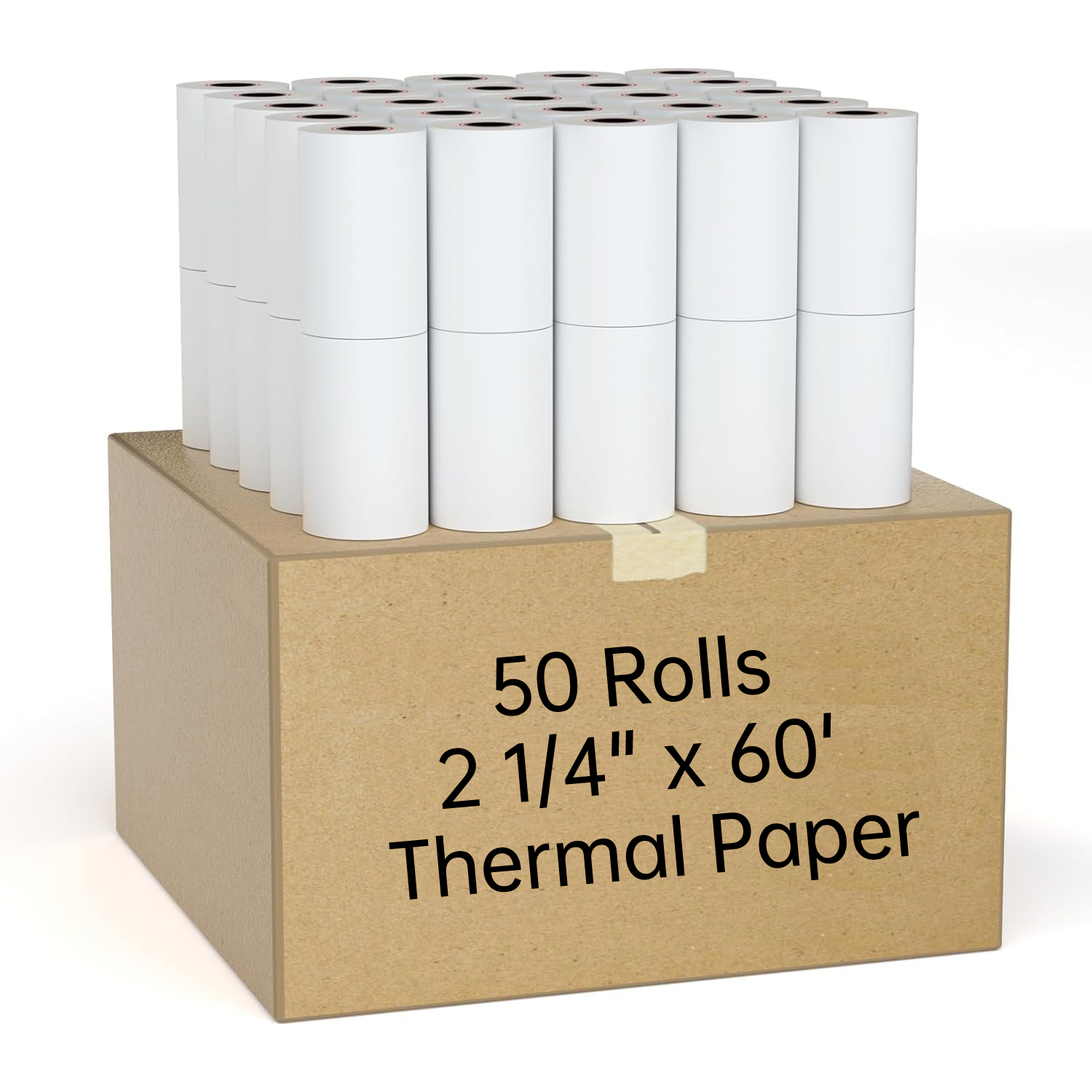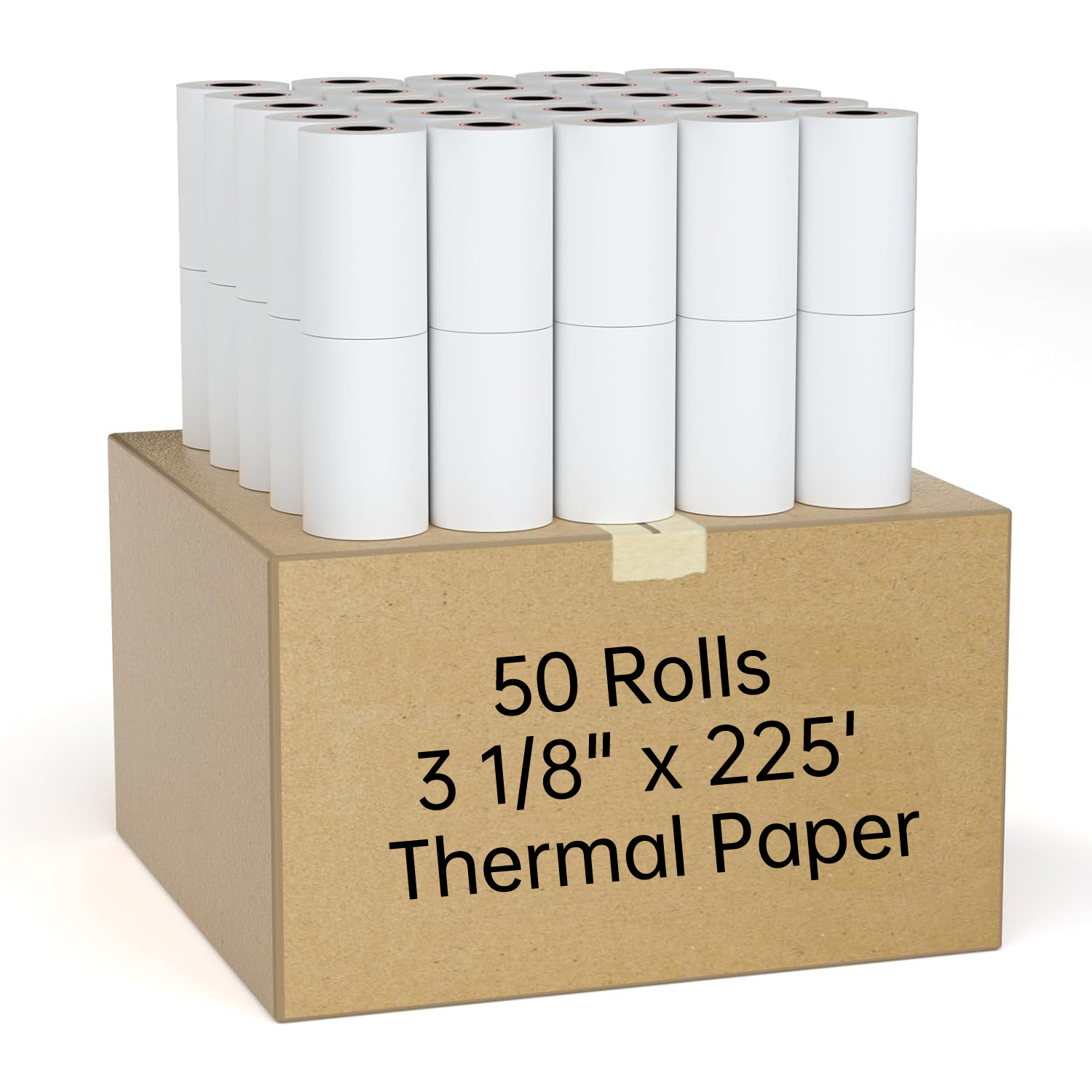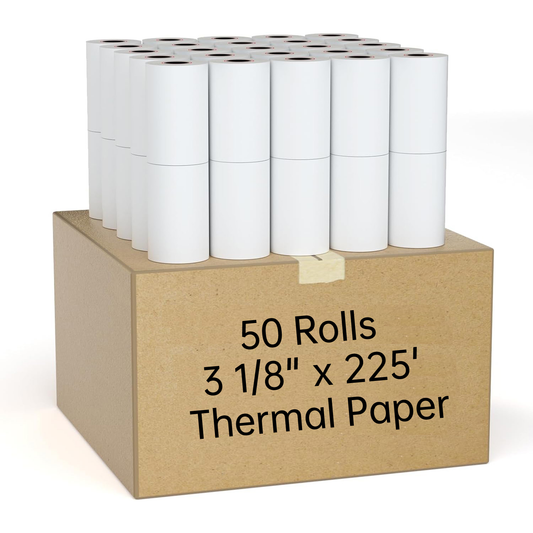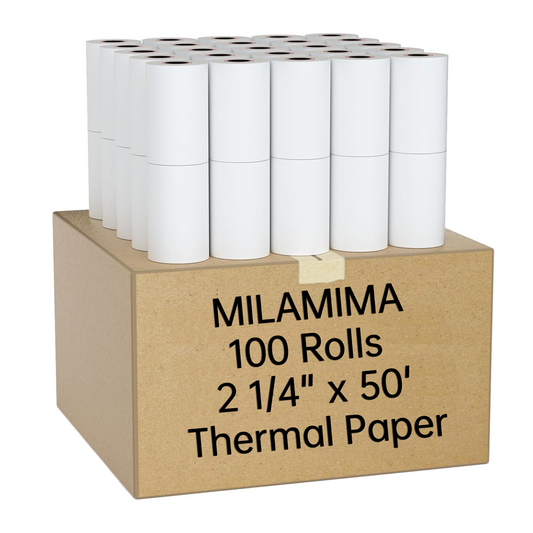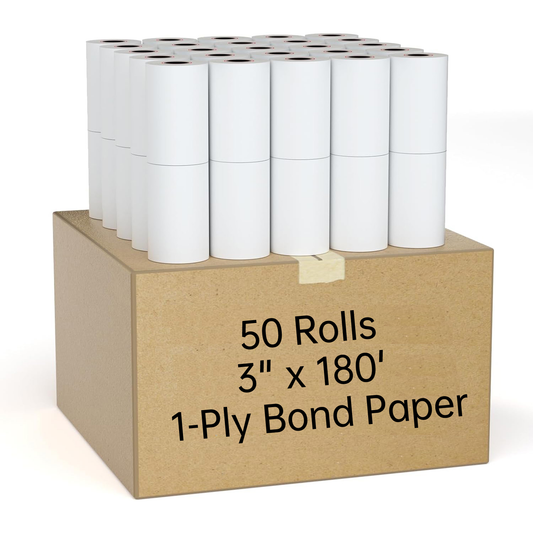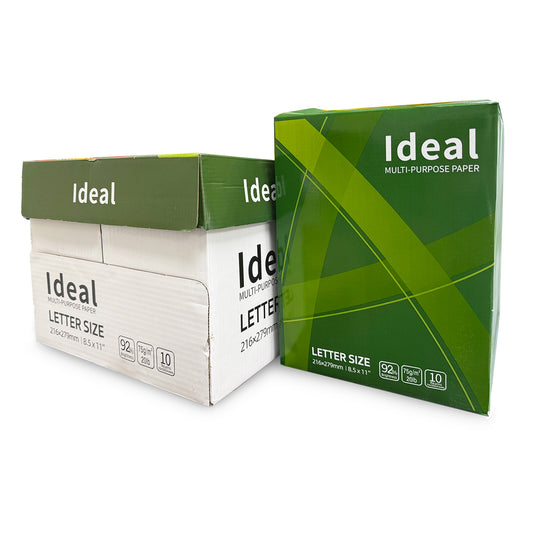What is the Paper that is in a Cash Register?
Cash register paper, commonly known as thermal paper, is a specialized paper used to print receipts and transaction records in various business settings. This paper type is essential for providing customers with a tangible record of their purchases and is used extensively in cash registers, POS systems, ATM machines, and gas stations. Let's explore the different types of cash register paper, their features, and why choosing the right one is crucial for your business.
Types of Cash Register Paper Rolls
- Thermal Paper
- Features: Thermal paper is coated with a chemical that changes color when exposed to heat. It requires no ink ribbons, making it a cost-effective and low-maintenance option.
- Uses: Ideal for cash registers, ATM machines, and gas stations. It provides clear, high-quality prints and is BPA-free, ensuring safe handling.
- 1-Ply Bond Paper
- Features: This type of paper is not coated and requires a ribbon to print. It is durable and provides high-quality prints.
- Uses: Commonly used in kitchen printers, calculators, and adding machines. It is lint-free, reducing printer jams and ensuring smooth operation.
- 2-Ply Carbonless Paper
- Features: Carbonless paper consists of two layers, allowing for the creation of duplicate receipts without the need for carbon paper. It reacts to pressure, transferring the print to the second sheet.
- Uses: Ideal for credit card machines and impact printers, enabling businesses to provide a copy of the receipt to both the customer and the merchant.
Key Features of Cash Register Paper Rolls
- Dynamic Sensitivity: Indicates how quickly the paper reacts to heat. Higher sensitivity ensures fast and clear prints.
- Image Stability: Refers to the longevity of the printed image. High-quality thermal paper retains readability for years when stored properly.
- Static Sensitivity: Shows the temperature at which the image starts to form. High static sensitivity means images form at lower temperatures.
- Advertising Opportunities: The blank back of most thermal paper rolls can be used for advertising, providing a cost-effective marketing tool.
- End of Roll Markers: Many rolls feature a red warning stripe to indicate the end of the roll, ensuring businesses can replace them promptly without disrupting service.
Factors to Consider When Choosing Cash Register Paper
- Heat Exposure: Select thermal paper that resists heat for better storage and transportation, especially in warmer climates.
- Top Coating: A top coat protects against environmental elements, extending the paper's usability.
- Thickness and Durability: Thicker paper is often more durable and provides clearer prints.
- Smoothness: Smooth paper reduces dust and prevents damage to printer heads.
- Moisture Resistance: Choose moisture-resistant paper for use in humid environments to maintain readability.
Why Do Cash Registers Use Thermal Paper?
Thermal paper is preferred for its efficiency and cost-effectiveness. It eliminates the need for ink ribbons, reducing maintenance and operational costs. Its quick reaction to heat ensures fast printing, which is essential for high-traffic environments like retail stores and gas stations.
Conclusion
Choosing the right cash register paper is crucial for ensuring smooth business operations and providing customers with clear, reliable receipts. Whether you opt for thermal, bond, or carbonless paper, understanding their features and benefits will help you make an informed decision. For businesses prioritizing safety, BPA-free thermal paper is an excellent choice, offering high-quality prints without harmful chemicals.


